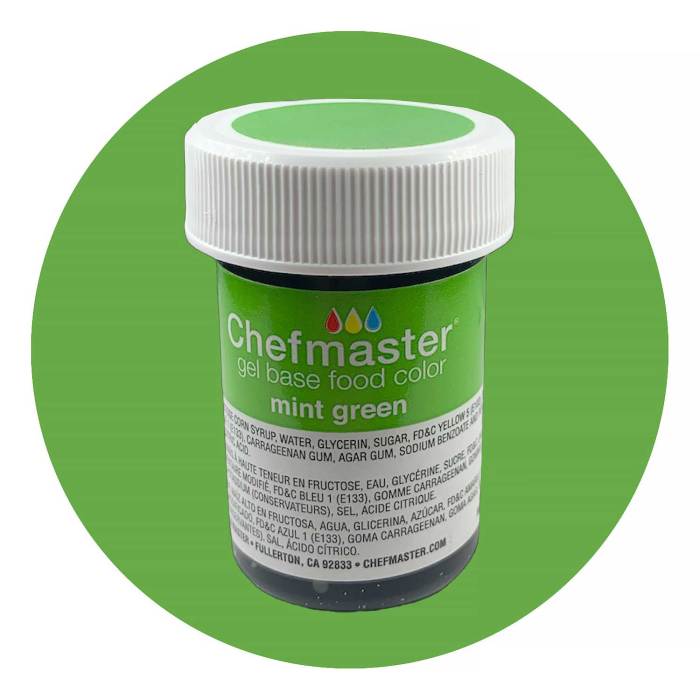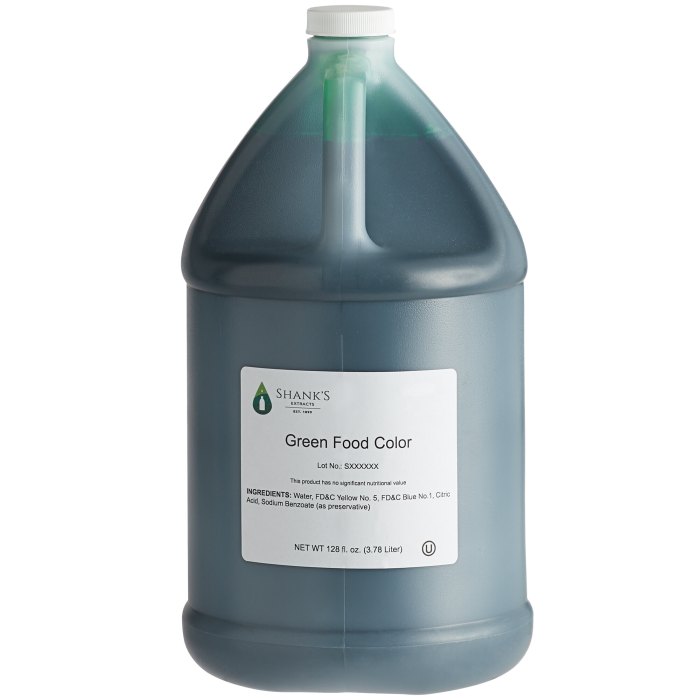Creating Different Shades of Sage Green

Sage green food coloring – Ah, sage green – that captivating hue that whispers of tranquility and nature’s gentle embrace. But the beauty of sage green lies not just in its singular charm, but in its versatility. By subtly adjusting its intensity and blending it with other colors, we can unlock a whole spectrum of enchanting shades, each with its own unique personality.
Let’s explore the delightful possibilities.
The key to mastering sage green lies in understanding its delicate balance. It’s a color born from a harmonious blend of yellow-greens and blues, and therefore its depth and vibrancy are easily manipulated. By carefully adjusting the ratio of food coloring, you can craft a range of shades, from the softest whisper of spring to the rich, earthy tones of an autumn forest.
Adjusting the Intensity of Sage Green, Sage green food coloring
The simplest way to alter the intensity of your sage green is by modifying the amount of coloring you use. Starting with a base recipe, you can gradually increase or decrease the amount of sage green food coloring added to your mixture. A smaller amount will result in a paler, more delicate shade, almost a whisper of green, perfect for subtle accents.
Conversely, a larger amount will yield a deeper, more saturated hue, reminiscent of moss growing on ancient stones. Experimentation is key here – each increment of coloring will subtly shift the shade, allowing you to fine-tune the color to your exact preference. Remember to always mix thoroughly to ensure a consistent and even distribution of color.
Mixing Sage Green with Other Food Colorings
Blending sage green with other food colorings opens up a world of creative possibilities. This is where the true artistry begins, allowing you to craft unique and personalized shades. For instance, adding a touch of yellow will brighten the sage green, moving it towards a more vibrant, almost chartreuse-like hue. Conversely, adding a dash of brown will create a deeper, more muted shade, reminiscent of olive green, perfect for earthy and rustic applications.
A subtle addition of blue will push the shade towards a cooler, more serene celadon, reminiscent of antique pottery. The possibilities are endless, inviting you to experiment and discover your own signature shades.
Consider these examples for a visual guide to the different shades achievable:
- Sage Green + Yellow: Produces a brighter, more vibrant, almost chartreuse green.
- Sage Green + Brown: Creates a deeper, more muted olive green.
- Sage Green + Blue: Results in a cooler, more serene celadon green.
- Sage Green + Red (a tiny amount): Adds a touch of warmth, creating a slightly more brownish sage.
- Sage Green + White: Lightens the sage green, creating a pastel shade.
Achieving Consistent Color Across Large Batches
When working with larger quantities, consistency is paramount. The key to achieving a uniform color across multiple batches lies in precise measurement and thorough mixing. Start by weighing your ingredients, using a kitchen scale for accuracy. This ensures that the ratio of food coloring to your base mixture remains constant, preventing variations in shade between batches. When mixing, use a high-speed mixer or whisk vigorously to ensure that the color is evenly distributed throughout the mixture.
It’s often helpful to prepare a small test batch first to fine-tune the color before proceeding with the larger quantity. This allows you to adjust the amount of food coloring as needed, ensuring a perfectly consistent and beautiful result.
Safety and Regulations Regarding Sage Green Food Coloring

The vibrant hue of sage green, so appealing in culinary creations, raises important questions about the safety and regulation of the food colorings used to achieve it. Understanding the potential risks and the regulatory frameworks governing these additives is crucial for both consumers and food producers, ensuring the safe and responsible use of this popular color. A deep dive into the regulations and potential health impacts will illuminate the landscape of sage green food coloring and empower informed choices.
Common safety concerns surrounding food coloring generally revolve around potential allergic reactions, hyperactivity in children, and the long-term effects of consuming artificial additives. While many studies have investigated these concerns, the results are often inconclusive and vary depending on the specific food coloring, the individual’s sensitivity, and the quantity consumed. The debate around artificial versus natural food colorings further complicates the issue, with proponents of natural options emphasizing their purportedly gentler nature.
Regulatory Standards and Approvals for Food Colorings
The regulatory landscape for food colorings differs significantly across countries. In the United States, the Food and Drug Administration (FDA) approves food colorings through a rigorous process, evaluating their safety and establishing acceptable daily intake levels. The European Union (EU) follows a similar approach, with the European Food Safety Authority (EFSA) assessing the safety of food additives, including colorings.
However, the specific colorings permitted and their allowed concentrations can vary considerably between regions, reflecting different risk assessments and national preferences. For example, certain azo dyes, common in many countries, might face stricter regulations or even be banned in others due to concerns about their potential carcinogenic properties. Manufacturers must comply with the regulations of the specific country or region where their products are sold, ensuring that the labeling accurately reflects the ingredients and complies with local legal requirements.
Potential Health Impacts of Natural versus Artificial Sage Green Food Colorings
The distinction between natural and artificial sage green food colorings is crucial when considering potential health impacts. Natural colorings, often derived from plant extracts like chlorophyll or spirulina, are generally perceived as safer due to their origin in naturally occurring substances. However, even natural colorings can cause allergic reactions in sensitive individuals. Artificial colorings, on the other hand, are synthetically produced and might raise concerns about potential long-term health effects, although the scientific consensus on this remains debated.
It’s important to note that both natural and artificial colorings can vary widely in their composition and purity, impacting their potential safety profile. For instance, some natural colorings might contain trace amounts of heavy metals or other contaminants if not properly processed.
Checking Food Product Ingredient Lists for Artificial Food Colorings
Consumers can actively participate in making informed choices by carefully examining food product ingredient lists. Artificial food colorings are typically identified by their specific names, often including a number (e.g., Yellow 5, Red 40, Blue 1). These numbers correspond to specific color additives listed in the FDA’s or the EU’s approved colorant inventory. Alternatively, some products may use descriptive terms like “artificial colors” or “artificial color added,” indicating the presence of synthetic colorants.
The subtle charm of sage green food coloring, perfect for adding a touch of nature’s elegance to baked goods, often sparks a question: is this hue safe for our furry friends? Before you consider adding it to your dog’s biscuit recipe, it’s crucial to understand the answer to the question, can dogs have food coloring ?
The safety of your canine companion should always be the top priority when experimenting with culinary colors like sage green.
By carefully reviewing the ingredient list and familiarizing oneself with common artificial food coloring designations, consumers can make conscious decisions about the foods they purchase and consume. The absence of these terms doesn’t automatically guarantee the product is free of colorings, as natural colorants may be used without explicit labeling in some cases.
Visual Representation of Sage Green in Food

The subtle yet captivating hue of sage green offers a unique visual experience in the culinary world, moving beyond the typical palette of vibrant colors. Its versatility allows it to evoke feelings of freshness, naturalness, and even a touch of sophistication, depending on the context and application. The impact of this color is heavily influenced by the food’s texture and the overall presentation, making it a fascinating choice for both professional and home bakers and cooks.Sage green’s visual impact varies greatly depending on the food item.
In frostings, its muted tone creates a sense of understated elegance, particularly when paired with complementary colors or textures. In candies, the color can be playful and whimsical, particularly in small, individually wrapped pieces. When incorporated into drinks, it can suggest a refreshing, herbal quality, especially in beverages featuring natural ingredients like mint or cucumber.
Examples of Sage Green in Food
Imagine a creamy sage green frosting adorning a delicate vanilla cake. The frosting’s smooth, almost velvety texture contrasts beautifully with the slightly crumbly cake, creating a delightful textural interplay. The sage green, in this context, is not overpowering; it subtly enhances the overall visual appeal, lending a sophisticated air to the dessert. The color’s mutedness allows the cake’s inherent beauty to shine through.Next, picture a batch of sage green macarons.
These small, delicate cookies, with their characteristic smooth shells and creamy filling, are elevated by the unique color. The sage green, in this instance, brings a sense of springtime freshness, while the slight sheen of the macaron shells amplifies the color’s vibrancy. The overall visual effect is one of delightful lightness and elegance.Finally, consider a refreshing sage green smoothie.
The color, derived perhaps from spinach or kale, speaks of health and vitality. The smoothie’s thick, almost viscous texture further enhances the visual impact, creating a sense of richness and depth. The sage green, in this liquid form, appears more translucent, allowing light to subtly filter through, adding another layer of visual interest.
The Influence of Lighting and Background on Sage Green
Lighting plays a crucial role in how sage green is perceived in food photography. Under soft, natural light, the color appears true to its name – a gentle, slightly muted green with subtle gray undertones. However, under harsh, direct sunlight, the color might appear slightly washed out or faded, losing some of its depth and richness. Similarly, artificial lighting can alter the perception; warm-toned lighting might shift the sage green towards a yellowish-green, while cool-toned lighting might make it appear more bluish-green.The background against which the sage green food is presented also significantly influences its visual impact.
A neutral, light-colored background, such as white or a very pale beige, will allow the sage green to stand out, highlighting its unique hue. In contrast, a dark background will make the sage green appear more vibrant and saturated, enhancing its depth and intensity. A busy or patterned background, however, could detract from the color’s impact, making it appear less distinct.
A simple, uncluttered background is key to showcasing the sage green’s beauty effectively.
Q&A
Is sage green food coloring suitable for vegan baking?
This depends on the brand and specific ingredients. Always check the ingredient list to ensure it aligns with vegan requirements. Many brands offer vegan-friendly options.
Can I use sage green food coloring in savory dishes?
Yes, while commonly used in desserts, sage green food coloring can subtly enhance the visual appeal of certain savory dishes, such as pasta dough or sauces, depending on the desired effect.
How long does sage green food coloring last?
The shelf life varies depending on the type (liquid, gel, powder) and brand. Check the expiration date on the packaging and store according to the manufacturer’s instructions to maintain quality and prevent spoilage.
Where can I purchase sage green food coloring?
Sage green food coloring is widely available online and at many baking supply stores, supermarkets, and craft stores.
